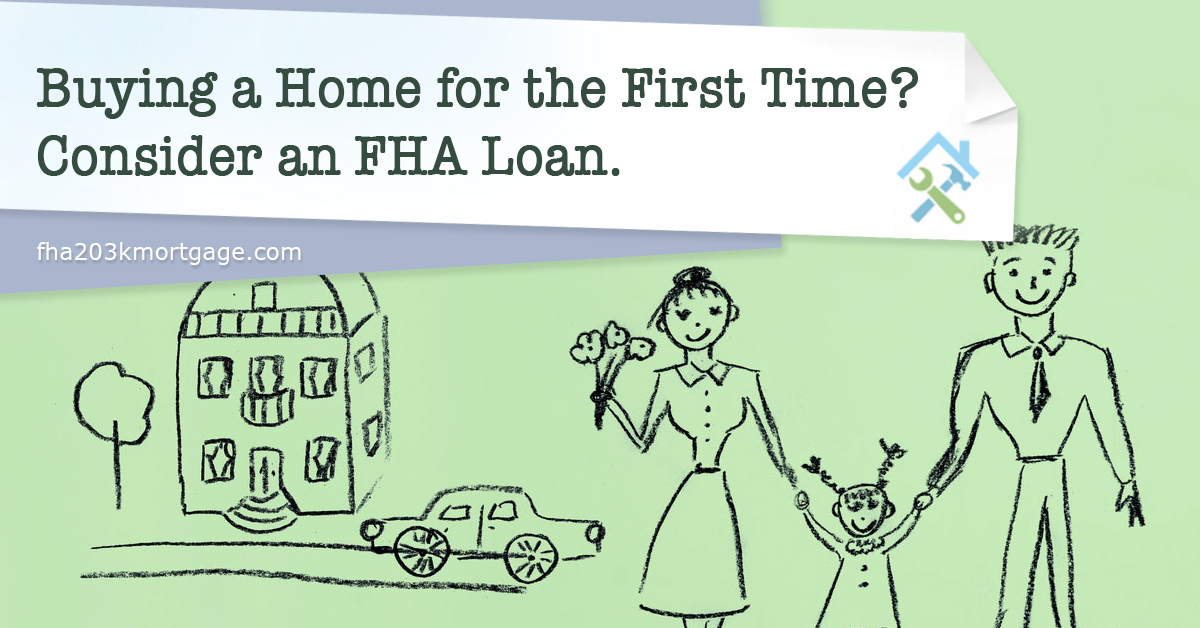
New FHA Loan Limits and Changes That Come With It

FHA Reduces MIP Rates Yet Again
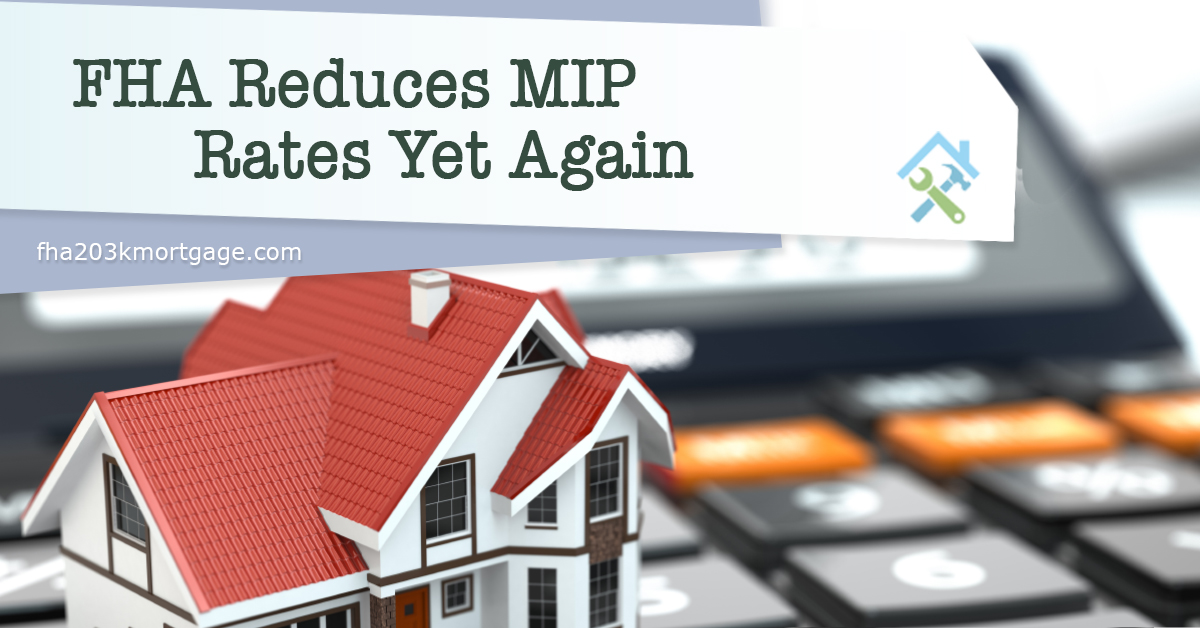
The Federal Housing Administration has done it again! On Monday, the U.S. Department of Housing and Urban Development issued a statement that the FHA will be reducing annual premiums to 0.60 percent. This marks the second time the agency has slashed rates in favor of those with limited or less-than-perfect credit. The first one took effect on January 26, 2015.
The new rates come as the agency enters its fourth year of improved economic health. The FHA has gained $44 billion over the last four years.
With the FHA fund at its strongest, USDA Secretary Julián Castro cites said consumers are confronted with higher credit costs due to increased interest rates. The rate cut is intended to provide some measure of relief by making insurance premiums more affordable, at a time when the mortgage fund is stable.
“After four straight years of growth and with sufficient reserves on hand to meet future claims, it’s time for FHA to pass along some modest savings to working families… This is a fiscally responsible measure to price our mortgage insurance in a way that protects our insurance fund while preserving the dream of homeownership for credit-qualified borrowers, which also supported by the sites like https://www.comparebusinessloans.org.uk/commercial-mortgage.”
FHA’s annual fee is currently at 0.85 percent of the mortgage value. The new rate reduces this figure by 25 basis points and will be applicable to those who ‘ll be taking out new mortgages or refinancing existing ones on or after January 27.
Make the most of your FHA loan today!
Is Kitchen Remodeling Allowed under 203k Guidelines?
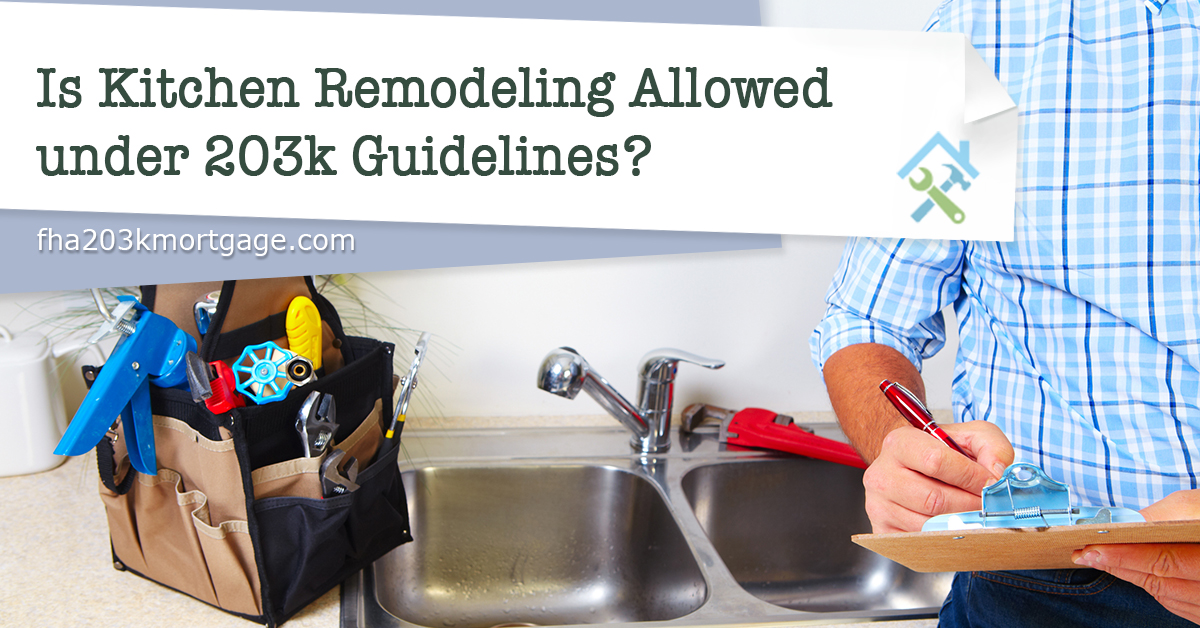
Kitchen remodeling is often one of the largest renovations any homeowner desires. Whether you purchase a new home or wish to refinance your existing home, if you use the FHA 203K loan, you can use the funds to remodel your kitchen. The good news is that kitchen remodels usually help you increase the value of your home and most homeowners can obtain more than 80 percent of their investment back. Do you know that art investments can add great value to your home? If you are looking to invest in fine art then you have to know how to build your art collection!
However, if you’re a wine investor, collector or connoisseur, the need for a wine fridge being added into your kitchen is advantage! If you’re remodeling any part of your house, then considering appliances like washing machine also plays a crucial role. Click here to see the difference in front loader and top loader, and how it can affect your remodelling project.
The Different Ways for Kitchen Remodeling
There are two ways to pay for kitchen remodeling with the FHA 203K loan. If your repairs are minor, such as refacing the cabinets, replacing the faucet, or replacing the appliances, you could use the Streamline 203K. This program requires less verification and may not require you to use a 203K loan consultant. The repairs included in the Streamline 203K cannot be structural, however, and the maximum amount of the repairs cannot exceed $35,000. You can see this page if you’re looking for a reputable kitchen remodeling company. I also recommend you to read about a few tips on how to lift glass safely if you are to install glass on your kitchen renovation project.
If you wish to perform major renovations in the kitchen, which include structural repairs, you can still finance it with the 203K loan; it just has to be the full program, it is an investment as Repairing Your Home Can Improve Its Efficiency and value. This program requires more stringent verifications and the use of a loan consultant. This loan does not have a dollar amount maximum; the lender determines the maximum loan amount based on the predicted value for the home after the repairs, including backsplash design for bathrooms. Most borrowers can take out 110 percent of this value unless this amount is greater than the FHA loan limits for the area.
Simple Guidelines
Just like any other FHA loan, the guidelines to qualify for the 203K loan are simple. The most common guidelines include:
– Minimum credit score of 580 – Many lenders will require a score slightly higher than this, but this is the minimum that the FHA set. If one lender turns you down due to a low credit score, consider trying a different lender that might have different guidelines.
– No more than one late housing payment in the last year – The housing history reporting on your credit report is of utmost importance. The FHA and the lenders want to see that you can make your housing payments without a problem every month before they provide you with funds to fix up a home.
– Timely credit history from other sources – Any other credit you have outstanding should also be paid on time. This credit does not hold the same importance as the housing history, but too many late payments in the last 12 months can work against you.
– Debt ratios around 29/41 – The debt ratios for FHA loans are slightly higher than conventional ratios. They allow a 29 percent front-end ratio, which is your principal, interest, taxes, homeowner’s insurance, and mortgage insurance. On the back-end, they allow a total debt ratio of 41 percent. This includes your total mortgage payment along with any other monthly obligations, such as car payments, student loans, and credit card payments.
If you have any factors that make your loan profile risky, such as a low credit score or a high debt ratio, a great way to offset that is with reserves. This means money in the bank that covers a specific number of months of your mortgage payment. Typically between six and twelve months is the ideal amount of reserves to have on hand, but any liquid reserves can help your case.
A Required Contractor for Kitchen Remodeling
One of the strictest guidelines surrounding kitchen remodeling with the 203K loan is the need to have a licensed contractor do the work. Even if you are completely qualified to remodel your kitchen, you have to be able to complete it in 6 months or less; there are no exceptions. If you have a full-time job, chances are a kitchen remodel will not fit into your free time in less than six months. A licensed contractor has to abide by these rules if he wants to get paid, which is why the FHA and the lenders usually require the use of a contractor.
The contractor will create an outline of the costs necessary to remodel your kitchen and the lender will approve or deny it. The loan cannot close and work cannot begin until all negotiations are complete and the lender approves everything that the contractor suggests. The contract needs to provide accurate details regarding every cost for the remodel, you can see the water extraction options available at Smart Dry Restoration and understand the cost for your plumbing work in your kitchen. Hiring professionals from places like Slam Plumbing to do even the simplest work is advisable. Any money above and beyond what the contract states must be an unexpected cost due to issues that were unforeseen. Most lenders require you to have a contingency account of at least 10 percent of the total cost for the renovation for cases like this.
A Loan Consultant
The loan consultant will become your partner when going through the 203K process with a kitchen remodel. The loan consultant can work as the liaison between you, the contractor, and the lender. This cuts down the headaches and the work you must perform in order to get everything done. If you choose the right loan consultant, he will have experience with the specific type of remodeling you desire, which will help ensure that the work gets done in a timely and efficient manner. The right consultant also knows what to expect and what costs are normal for the desired renovations.
There are a lot of factors that go into the kitchen remodeling with the FHA 203K, but you can make the process go smoothly with the right help. Make sure to choose a lender and a loan consultant experienced with 203K loans. You should also interview several contractors to see what their experience with this loan program is like since the requirements are so strict. There is no room for error or delays, as the specifications clearly state that all work must be completed within 6 months of closing on the loan. Taking the time to do your homework can help you have a seamless process with a beautiful kitchen remodel in the end.
How a Mortgage can Finance a New Addition on your Home

You’ve run out of room in your home, now what? Do you move or do you put an addition? Only you will know which option is right for you, but generally, you can obtain financing for the new addition if you have good credit and room in the equity of your home or look for alternatives like opening a demo trading account. If financing the addition is an option for you, it is usually the less expensive route to go. For mortgage issues, you could try here for any issues with mortgages and if you have any questions you can contact a mortgage broker.
Figure out what you Need for the New Addition
First, you need to figure out what you need. Talk to a licensed contractor and/or architect like Just DIY Decor to determine what it would take to put an addition on your home. Unless you have the qualifications to do it yourself, hire a professional. Just the consultation should not cost you too much and it could save you many headaches in the future. The professionals know the type of work the house needs as well as a ballpark estimate of the costs. They will pass this information along to you to help you figure out your next step.
You should always add at least 10 percent onto the quotes contractors give you. This allows you to account for any mistakes or surprise emergencies that occur. Without this extra reserve, you could find yourself in a serious financial bind.
Determine your Qualifying Factors
Once you know the amount of money you need to put on the addition, you need to figure out what type of financing you qualify to receive. There are several options including:
– Home equity loan
– Home equity line of credit
– FHA 203K renovation loan
These options each have different qualifying factors you must meet. In order to determine what you qualify for, consider the following factors:
– Your credit score
– Your credit history
– The value of your home
– Your debt-to-income ratio
– The stability of your employment/income
Each of these factors plays a role in the type of financing you can receive and every lender will require different qualifications.
What is your Loan-to-Value Ratio?
If you want to take out a home equity loan, your loan-to-value matters a great deal. Most lenders do not lend out more than 80 percent of the home’s value if you take a line of credit. This means that you receive a specific amount of money in an account, like a checking account, which you can use to fix up your home. You can draw the money out by writing checks and pay it back whenever you can during the draw period. If you pay the money back, you can use it again during that draw period, which is usually 10 years.
A fixed home equity loan can sometimes be worth as much as 85 percent of the home’s value. This is because you receive a fixed amount of money all at once and have fixed payments to pay it back. This type of loan is slightly less risky for the lender, which is why they can loan you a little more in terms of the loan amount.
The FHA 203K program is the most liberal program in terms of the loan-to-value ratio. If you use the full 203K program, which allows you to make as many changes as you want with very few restrictions, you can borrow up to 110 percent of the future value of the home after the contractors complete the addition. Just like any other FHA program, the 203K program has liberal qualifying requirements, allowing you to fix up your home even if you have lower than average credit.
What is your Credit Score?
Your credit score plays an important role in the type of financing you can obtain to put an addition on your home. Obviously, people with higher credit scores have more options. Because a second mortgage takes second lien position on the title, the mortgage holder is in a riskier position than the first lienholder. If something was to happen and you defaulted on the loan, the first lienholder gets paid off first. This might leave the second mortgage holder with nothing, depending on the circumstances.
Because of this risk, you need good or excellent credit to obtain a home equity loan or line of credit. Generally, people with a score lower than 700 find it hard to find a home equity loan, but they are out there, typically with portfolio lenders, otherwise known as subprime lenders. If you have other compensating factors, such as a low debt-to-income ratio and plenty of assets, you might be able to convince a lender to provide you with a home equity loan.
If you do not have “good” credit, you might still qualify for the FHA 203K loan. This program allows credit scores all the way down to 580. Not every lender will allow a credit score this low, but there are some out there. If your credit score is below 700, but your credit is fairly good, meaning you do not have any late payments; you are at least two years out from any bankruptcies; you are at least three years out from any foreclosures; and you do not have an excessive amount of outstanding credit, you could be eligible for the 203K program.
What is your Debt-to-Income Ratio?
The debt-to-income ratio plays an important role in your ability to obtain financing for a new addition on your home. On most home equity loans, a debt ratio of less than 45 on the back-end is recommended. This means that your total debts, which include your first mortgage (principal, interest, taxes, and insurance); the second mortgage payment (principal and interest); car payments; student loans; and credit card payments all total less than 45 percent of your total monthly income.
Just like every other factor, the FHA 203K program might offer a little more leniency when it comes to the debt ratio. The FHA program looks at every aspect of your loan as a whole, rather than looking at individual factors. This enables you to have compensating factors, like we talked about above, and still get the FHA 203K loan with a higher debt ratio.
Obtaining financing for a new addition on your home will definitely take more work than your first mortgage took, but it is well worth it. If you have the option to add onto your home rather than picking up and moving, it is generally the cheaper route for you. Not to mention the fact that there is much less work and headaches involved in fixing your home up rather than moving!
Do I need Great Credit to Qualify for a 203(k) Mortgage Loan?

Most people assume that any loan program requires great credit, including the 203K Mortgage Loan program, and they can even check this next page if they need more information on loan services. The good news is that no program requires “great” credit. Every program looks at the overall picture of your loan profile to determine your risk level. Most programs do have minimum credit score requirements, including the 203K program, which prefers credit scores over 580, but as you can guess, a score of 580 is far from great, which means that this FHA-backed program does not require you to have great or even good credit, as long as you have other compensating factors, and if you want to get other ways to make money you can learn to trade gold which is a great option for this as well. If you do have a credit score as low as 580, it is preferable that the derogatory credit is at least 12 months behind you, but certain lenders will make exceptions if you can show that you have recovered from the period of derogatory credit, check this link right here now to check if you are eligible for a mortgage.
Housing History is Important
One of the largest factors the FHA looks at is your housing history, whether mortgage or rental history. The cleaner your housing history, the more likely it is that you will get approved for the 203K mortgage loan. So what does a clean housing history look like? Typically, no more than one late housing payment in the last 12 months is allowed. If there is more than one late payment, you need to have good reasons for those late payments. The FHA rules do allow for up to three late housing payments in the last twelve months, but not too many lenders will allow that many late payments without adequate reasons for the late payments. Your housing payments can be verified by your credit report if you have a mortgage right now and wish to refinance into a 203K loan or it can be verified by your landlord and canceled checks if you currently rent and wish to purchase a home that needs to be fixed up.
Other Trade lines and their Importance
Your other trade lines should be in good standing as well, even though they do not hold the same level of importance as your housing payments. Any late payments can hurt your ability to get the 203K loan, but if you can show that your late payments were a one-time occurrence and that you have since brought your payments current and have paid them on time. Any trade line that reports on your credit report plays a role in your ability to get the 203K mortgage loan, so do not take any chances with any of your accounts. The more liabilities you can pay on time, the better off your chances of getting approved will be. If your credit history is more than a little blemished, it is a good idea to fix it up before applying for the FHA loan just to increase your chances of getting approved with lower interest rates.
Compensating Factors
So what happens if you do have “bad” credit? Are you ineligible for the 203K loan? The good news is that you can probably still be a good candidate for the loan, but you have to have compensating factors. This could mean many different things, depending on the circumstances surrounding your application. A few examples of compensating factors include:
- Low debt ratio – The lower your debt ratio, the lower the risk you pose to the lender. The FHA guidelines for the 203K loan are 29/41, but that does not mean that you should have ratios that high. The lower your ratios, the better you can afford a new loan.
- Plenty of reserves – Money in your bank speaks volumes to lenders. The more money you have on hand, the better chances you have of getting a 203K loan. Reserves are money you have set aside in a liquid bank account that can be used to pay your mortgage if your standard income becomes unavailable. Lenders measure your reserves based on the number of months the money you have set aside will cover – the more months you can cover, the better your chances of getting approved.
- Good housing history – You can have a low credit score and have a good housing history if you have made your revolving or installment payments late. The FHA puts the most emphasis on the housing payments, which can be a compensating factor if your credit score is low. As you work to increase your credit score, having on-time housing payments can work in your favor.
- Stable income – The general rule is to hold the same employment for at least two years in order to be eligible for an FHA loan, but there are ways around that requirement. However, the longer you have the same employment and stable income, the less risk you pose to the lender. On the other hand, if you have any employment issues, you can visit hand hkm.com website for some best help options!
Apply with Different FHA 203(K) Lenders
The best thing to do when you do not have great credit and wish to use a 203K mortgage loan is to apply with different lenders. Lenders can add their own requirements on top of the general FHA rules, which state that you must have:
- A credit score higher than 580
- Debt ratios around 29/41
- No more than one late payment in the last 1 months
- Stable employment/income that can be verified
- 5% LTV or lower
If a lender tightens the requirements in order to qualify for the 203K mortgage loan, it might disqualify you if you do not have great credit or have enough compensating factors. But because every lender has different requirements, you might find a lender that is better able to provide you with a loan approval. Every lender has their own level of risk that they can accept, making different borrowers eligible or different programs.
The 203K mortgage loan is a great way to purchase a home and have the money you need to fix it up. If you do not have great credit, do not assume you are not eligible for the loan program. Shop around with various lenders to see who will accept your level of risk and provide you with the most favorable terms for your loan!
Can the 203K Contingency Reserve be used for Other Repairs?
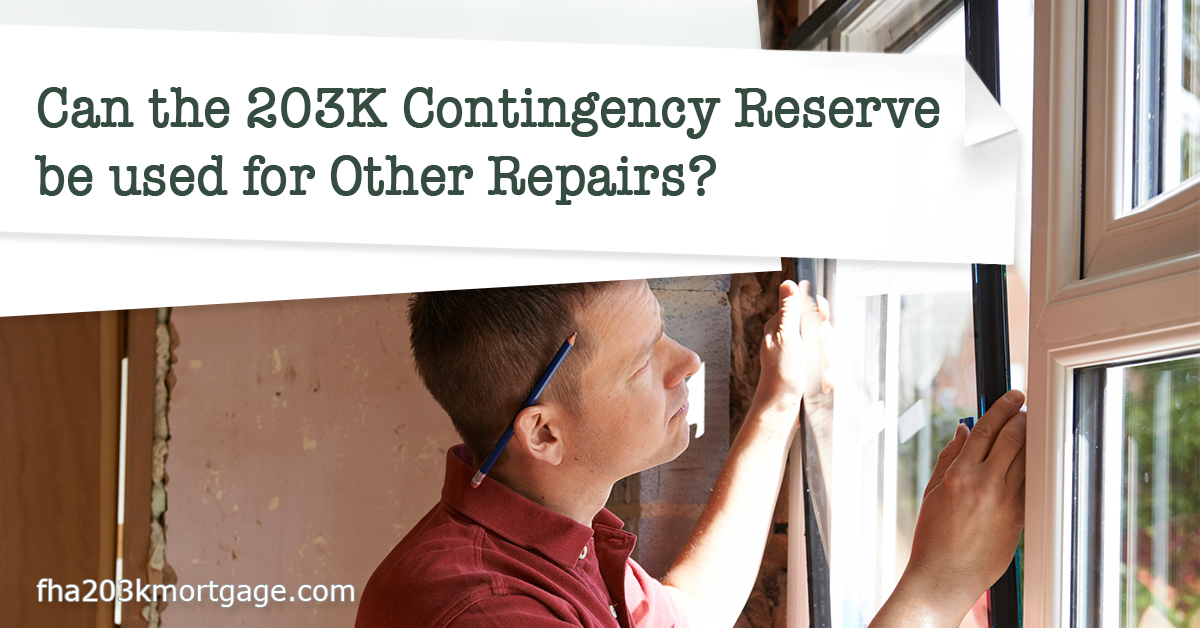
When you take out an FHA 203K loan, you are taking out money to conduct repairs or renovations on your home or a home you are purchasing. You can hire an expert like KVN Construction to work on your renovation. Because we all know that problems can occur when you start doing work on a home, the FHA requires a contingency reserve. The amount required depends on the extent of the work being done, but can range between 10 and 20 percent of the cost of the work being done on the home. Once the work is complete, however, what is done with the money? Can you use it for other repairs? The good news is that, yes, you can use the money for other repairs; the bad news is that everything must be approved.
Discussing the Repairs
The contingency reserve is not for you to do whatever you want with, unfortunately. The money can only get spent if the lender approves what you want to do with it. If the lender does not approve or there is not enough money to perform the repairs you want to do, then the money goes directly back towards the principal of your 203K loan. Typically, the lender will approve the changes that you propose unless there is concern that the health and safety of the home is still in question, at which point the lender would require the contingency reserve funds to be put towards those changes that will make the home safe and sanitary.
The Changes you can Make
Once the home is considered safe and sanitary and passes all codes, whether FHA, city, or county, you are free to do with the funds as you wish. You can make renovations that are considered somewhat structural, replace appliances, or even make cosmetic changes. The Appliance Guys offers a wide range of dishwashers from different brands, find more at their website. If you are using the full 203K, which is the only 203K program that requires a contingency fund, the options are limitless as to what you can do. Following are a few changes allowed on this program:
- Replace flooring
- Finish the basement
- Replace/repair roofing (visit our website at https://colonyroofers.com/)
- Repair/replace gutters
- Remodel kitchens
- Remodel bathrooms – Give your bathrooms the modern design by installing glass shower doors just like the ones at Glass Shower Direct!
- Change appliances
- Paint interior/exterior
- Repair termite damage
- Remove/repair mold damage
- Add a porch or patio
- Add a room
These are just a sampling of the changes you can make with the 203K loan. What it comes down to is the cost. You have to be able to get the costs approved by the lender as well as the contractor that will provide those costs and the work. The contractors need to be licensed and insured in order to work on the property and they have to meet with the approval of the lender. The value of the home must also come back high enough in order to get the loan large enough to complete the repairs on the home. The appraiser will take care of figuring out the future value of the home.
Once you know that the home is up to code and all of the repairs that the loan was designated to pay for are complete, you can make additional changes with the contingency reserves if they were not used. These changes can be just about anything as long as the lender approves. If you decide to not use the contingency funds, however, the money will come directly off of your principal, immediately knocking down the amount of time it will take to pay off your 203K loan. You will have to weigh the pros and cons of making further changes at this point, after you see how the house looks and if you need the work done or if you can pay for it out of your own pocket down the road.
Can a 203(k) be Used to Reconstruct a Structure on an Existing Foundation?
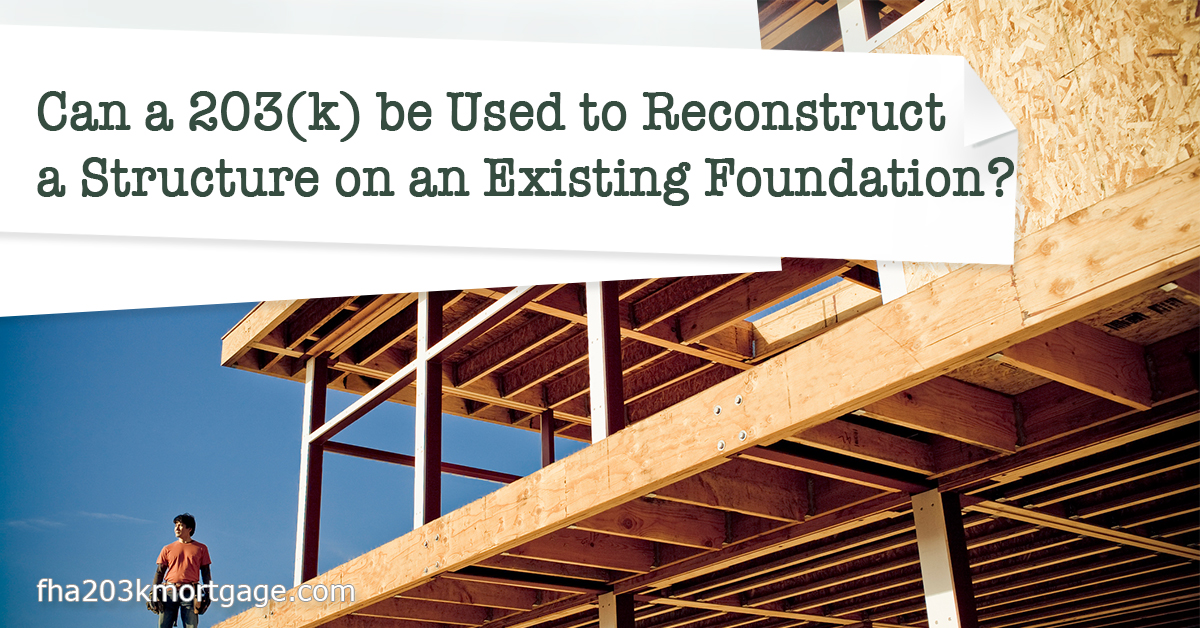
The 203K loan enables homebuyers or existing homeowners to make changes to a home with the use of the proceeds from the loan. This loan, which is one program, provides homebuyers or homeowners that are refinancing with the money necessary to not only purchase or payoff an existing mortgage, but also the funds necessary to fix up the home. These changes can range from changing the paint color in a home to completely demolishing an entire home and starting from scratch. If the change is related to the home’s foundation, one can instantly Click here.
Reconstructing a Home
What are the requirements in order to be able to reconstruct a home with the 203K program? There is one big requirement – you cannot change the foundation but you can visit https://www.aaafoundationservice.com/service-areas/pearland-tx/ and consult with the experts to find out the best solution to increase the strength of your old foundation. The foundation that is existing must be what is used to build the new home. The foundation must meet the following requirements:
- Structurally sound
- Able to hold the new structure being built
The loan consultant in charge of the 203K loan will secure approval from a structural engineer that can attest to the fact that the foundation is capable of meeting the above requirements before moving forward with the loan. You can click here to read the article on foundations! This is an added step that is only necessary on 203K loans that do not need foundation repair bloomington and are restructuring a home on an existing foundation.
What Changes can you Make?
Reconstructing a home basically means that you are starting from scratch. You are able to make as many changes to the home as you see fit as long as they fit within 110% of the future value of the home. Then also, the use of ready mix concrete during construction projects ensures a consistent quality and reduces material wastage, visit Carters Concrete who are a reputable supplier in Bournemouth to learn more about their offerings.
The home can be as close to new construction as you could get without building a new foundation or getting foundation repair champaign. You cannot, however, use this loan for new construction – the home must be existing for at least 12 months in order for the 203K loan to be used.
How to Start
If you wish to reconstruct a home with the 203K loan, you must meet the FHA requirements. The basic requirements to qualify for this program include:
- 580 credit score
- Debt ratios around 29/41
- Adequate housing history, whether rental or mortgage history
- Stable income and employment for the last 2 years with the probability of continued employment in the future
Once you know that you might qualify for FHA financing, you can apply with a lender that offers 203K loans. This requires two things:
- A lender that is FHA approved
- An FHA lender that offers 203K financing
Not every lender will offer 203K financing, so you may have to shop around to find a lender willing to work with you. Once you find a lender, the hard work begins.
The first step is for the lender to figure out the post-renovation value of the home. This is done with the help of a loan consultant and appraiser. You will need to provide the lender with a list of the renovations you plan to make, even if that means tearing the house down and starting again. A detailed list will provide the appraiser with the information he needs to come up with the future value of your home.
In addition to the work to be done, the lender will need to know the extent of the work, who will do it, how much it will cost, and how long it will take as this all plays a role in your ability to obtain an approval for the 203K loan. For the most part, you cannot do the work yourself; you must hire contractors to do the work for you. Your loan consultant and lender will have a say in which contractors you use as they will need to look at the work write ups and how much everything will cost. It helps to have estimates from several contractors to help you find the one that is not only the most cost effective, but has the most experience in the work you need done.
Once you have approval for the loan, the remainder of the loan process is the same. You must get a clear to close on the loan before you can start working on the home. This means that you meet all of the requirements of the lender, supplying all of the necessary information to show your worthiness for the loan. This means supplying pay stubs, W-2s, bank statements, employment information, and any other information the underwriters needs for your loan. Once the loan closes, the lender requires you to start the work within 30 days. If you are completely renovating the home, you will not be able to live in it; this means finding somewhere else to live for 6 months, as that is the length of time the FHA allows for the work to be completed on the 203K loan.
If you wish to demolish a home and start from scratch, the 203K loan is a good option. It allows you the money you need to get started without having any capital. It is one of the most fluid ways to get the cash you need to make the changes you desire on a home you wish to purchase or a home you already own.
Besides Repairs or Renovations, What Else does the 203k Cover?
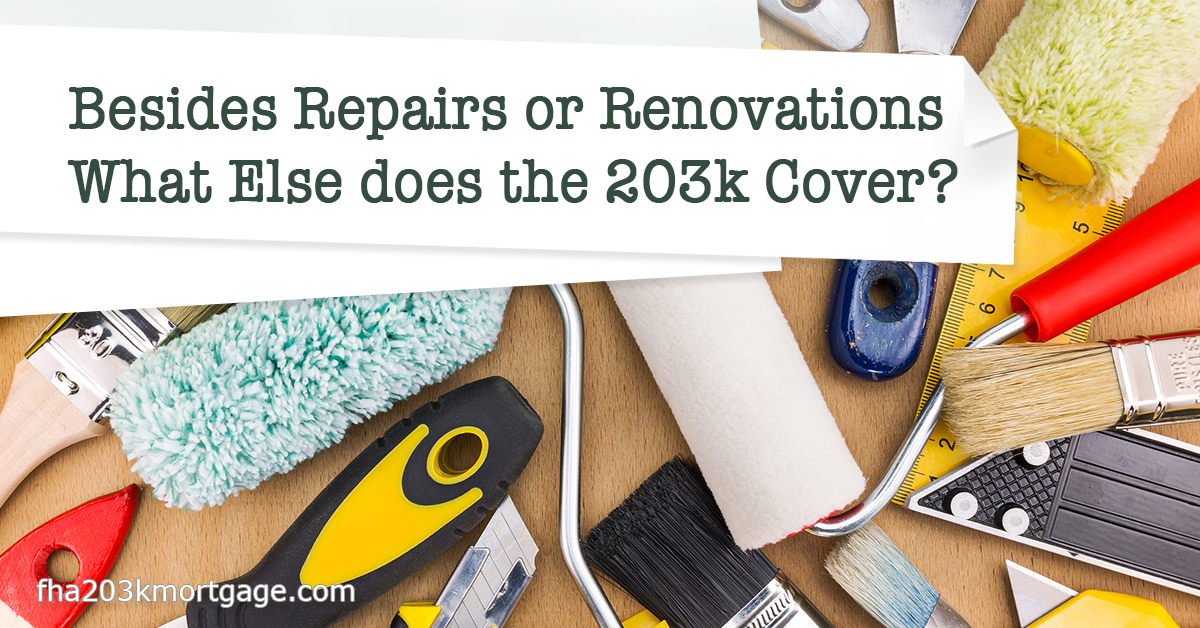
The 203K loan offers homebuyers a great chance to not only purchase a home but to fix it up as well. This means you can purchase a home that needs major renovations or repairs to bring it up to code and still be able to close on the loan. Major repairs and renovations are not the only things that the 203K is good for, however. There are many other ways that you can make improvements on your home with this loan which is easy to qualify for and has flexible guidelines.
Upgrade Appliances
Appliances are something that should last for up to 10 years sometimes and then need to be replaced. Sometimes you want to replace them before they stop working just because of the new technology and/or appearance that is available in today’s market. The 203K loan enables you to purchase new appliances for your home and include it in the loan. Appliances could be anything from a new refrigerator to a new washer and dryer. Maybe you have a top loading washer and you have always desired to have a front-loading machine or maybe your refrigerator no longer matches the décor in your kitchen – upgrading and/or changing appliances is a plausible use for this type of financing.
Upgrade/Replace Flooring
Flooring has a great impact on the value and look of your home. Just this one change can alter the entire appearance of the interior of your home. If you want to replace the carpeting or even change the entire first floor of your home from ceramic to hardwood flooring, for example, you can do so with this program. You can also opt for skirting your floors from the experts, https://www.octopusskirting.com.au/mdf-skirting-bunbury/ can ensure that with a simple adjustment you make greater changes. There is no requirement that the flooring you currently have must be in poor shape or any other odd requirements such as that – if you want to change the flooring and there is room in the loan, you can include it!
Paint the Interior or Exterior
Paint is another great way to change the entire appearance of a home, whether inside or out. But make sure you only hire professional painters. Whether you want to renovate your fence with the help of Tampa Fence Company or change the outside color to one that resonates with your personality or stands out better from the neighbors’ homes or you want to completely change the interior color of your home, you can include the costs to paint in the 203K loan. The difference with including painting in the loan, however, is that you must hire someone to do the painting for you, even if you usually do the painting inside, most lenders will require a contractor to do the work just so it is done in a timely manner rather than when you have a free moment or two. People can click here for expert house painting tips if they want to paint or renovate their homes.
Weatherization
If your home is not weatherized, it can cost you a lot of money in utility bills. The good news is that you can include weatherization into your 203K loan. This could mean changing things like your storm windows, front and back doors, and even adding insulation (check out here) or weather stripping to help keep the heat in your home in the winter and out of your home in the summer. The benefit of including weatherization charges into your 203K loan is that you are able to decrease your utility bills and save the wear and tear on your furnace and air conditioner unit.
Add Porch or Patio
If your home does not have a porch or patio, you can add one on with the 203K loan. This can help the curb appeal, value, and use of your home. A porch or patio can completely transform how you use the exterior of your home and since it can be a rather costly addition, it is a great thing to add into your renovation loan as long as you have the funds available.
Finish the Basement
Have you been longing to finish your basement without any luck in saving enough money? It can be a rather expensive change to your home and since it is below living level, it often takes a backseat to the budgets that homeowners have to set. If you are refinancing your home or even purchasing a home with the 203K loan, you can include the costs to finish the basement in the loan, giving you the ability to accomplish your goals without breaking the bank. Whether you want to make it a movie room, another bedroom, or just a living area, this loan can help you get the funds you need to get it done.
The 203K loan has many benefits to offer, even if you are not purchasing a home that needs extensive renovations. Some people use the loan to completely transform a perfectly acceptable home just because its décor or layout does not meet to their liking, while others use it to upgrade things like the appliances or flooring. The options are endless when you use the full 203K loan as you are not restricted to a specific dollar amount in renovation costs. As long as the value of the home will increase as a result of the changes and you do not go over 110% of the predicted value for the loan, you are able to use this loan for financing your project.
How is FHA Involved in the 203K Loan Process?

The 203K loan is actually an FHA program with many similarities to the standard FHA loan. You will find the qualifying factors to be the same as well as the fact that the FHA backs the loan for the lender who actually funds the loan. In addition, however, the FHA plays another role in the 203K process – they require that you use an FHA 203K loan consultant to help you through the process. There are two different requirements regarding this professional, depending on which type of loan you use – either the full 203K or the streamlined version.
Setting the Qualification Factors
The first way the FHA is involved in your 203K loan is the minimum qualifications they set. Your loan file has to meet these requirements in addition to any requirements the lender adds as they are the ones funding the loan. The minimum qualifying factors for the FHA loan include:
- Credit score higher than 580 (some exceptions allow a score as low as 500 but with a down payment of 10% rather than 3.5%)
- Debt ratios around 31/43, however, there is some flexibility depending on the lender
- Steady job history for the last 2 years unless there are specific reasons for a job change within that time, such as a promotion or job loss due to circumstances outside of your control
- Solid housing payment history for the last 12 months
The FHA is rather flexible with its qualifying guidelines, but some lenders might restrict that flexibility. Shopping around with different FHA approved lenders that have experience in the 203K loan process can help you find the lender that is the best fit for your needs.
FHA Guarantee
Another role that the FHA plays in the 203K loan process is the guarantee they provide the lender. This is the reason that FHA guidelines are a bit more flexible than any other program’s underwriting guidelines. The FHA guarantees the lender that they will pay them should the borrower default on the loan. The FHA gets the money to pay the lenders back on defaulted loans from the upfront mortgage insurance and annual mortgage insurance that you pay on any FHA loan, including the 203K loans.
The FHA Loan Consultant
Last, but not least, is the use of the FHA loan consultant on both the full 203K loan and the streamlined loan. The loan consultant has a variety of jobs, especially on the full 203K loan including:
- Help you find a home that can be improved as not all properties are feasible when it comes to including the costs in the loan. The loan consultant should have plenty of experience in the field and be able to be your eyes and ears when it comes to finding a home that will work out the best for you
- Write up the work that needs to be done and negotiate with the contractors accordingly. This helps to take the stress off of you, especially if you are not knowledgeable in this area as it is very easy to get taken advantage of in this area.
- Help you choose the contractor that is right for the work you need to be done.
- Help with the loan paperwork that needs to be completed as well as with any discussions or negotiations that need to be done with the lender.
- Disburse the funds according to the contract and as the inspections are completed by the consultant.
If you are using the streamline 203K, the loan consultant plays a lesser role, but still can assist you with the following:
- Complete the write-up for the work that needs to be done on the home.
- Help you choose the right contractors.
The only required job for the loan consultant on the streamline 203K is the write-up of the repairs. The loan consultant does not have to perform any inspections for the streamlined version of this loan; the appraiser completes the necessary inspections on this one.
The FHA plays a role in the entire 203K loan process; it just depends on the type you choose. With any FHA loan, however, the FHA has their minimum qualification guidelines along with the guarantee they provide the lender. You will have to shop with an approved FHA lender in order to take advantage of this great program; however, always ensure that the lender has plenty of experience in 203K loans and not just FHA loans for the smoothest process.
